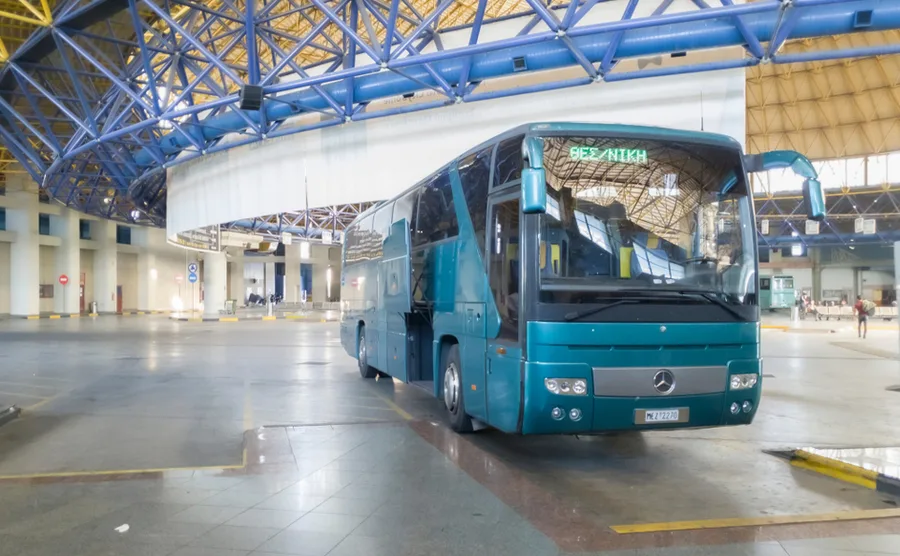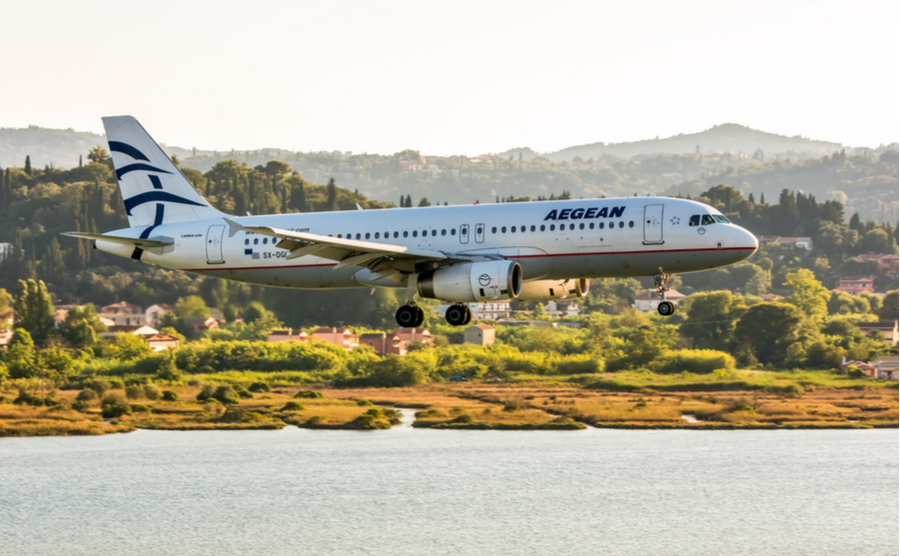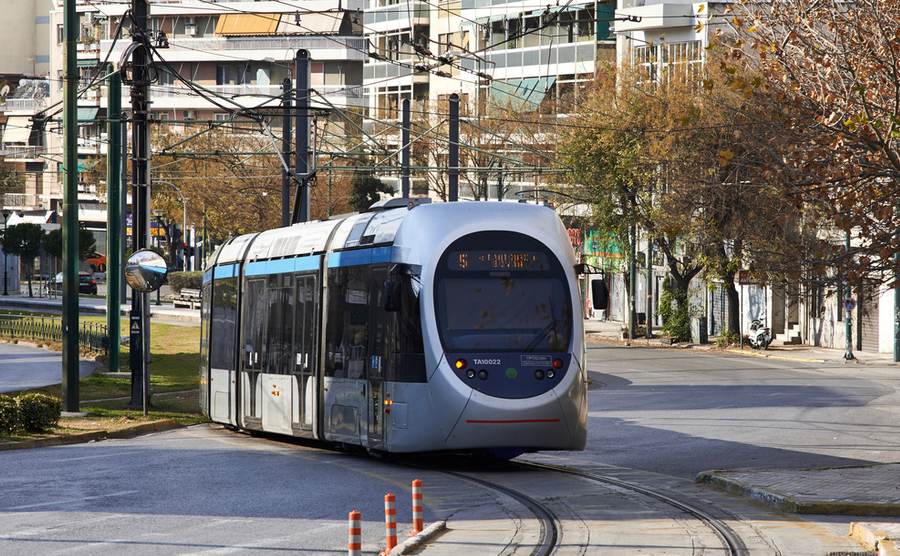From quaint tourist trains to the Athens metro to ferries between the islands, here’s your handy guide to public transport in Greece.
For travel to major cities and remote areas of Greece the primary mode of public transportation is buses. However, when it comes to travel to the islands, ferries and domestic flights are essential. Those who want to explore the countryside and discover potential areas to buy a home are likely to hire a car.
Other travel options on the mainland that might not immediately come to mind are trains, the metro, trams, and trolley buses, especially in Athens. As most of us will want to visit Athens at least once, I have devoted a section of this guide to travel options in Athens.
Find homes in Athens via our property portal.
Travel disruption in Greece
While public transport in Greece usually runs to time, schedules can become disrupted due to unforeseen circumstances like strikes or adverse weather conditions. In the summer, the smoke from wild fires can also cause flight cancelations. Its advisable to keep an eye on weather reports and the news in the days leading up to your journey.
Bus travel across Greece
KTEL is made up of over sixty bus companies, with more than 4,000 buses between them. You will recognise them by their green colour. KTEL cover intercity routes and offer an efficient service between large towns and the villages that surround them.
In general, the bus network is the most used form of public transport in Greece and is often cheaper than other transport options. The largest bus stations are Kifissou and Liosion stations in Athens. Timetables and information can be found on the KTEL website.
Train travel across Greece
Greece has over 2,200 kilometres of railway. Which is quite a low amount compared to Great Britain, which has over 15,000. At a time when other EU countries have been investing in trains as a greener form of transport, Greece has been investing in roads.
Train lines
The longest railway line in Greece runs from Pireous to Thessaloniki and on to Idomenis. The journey takes around 6 hours 45 minutes, with over fifty stations on route. However, the Express train takes just four and a half hours. Other train lines cover Thessaloniki to Ormeni, Athens airport to Corinth and Kiato, Corinth to Kalamata, Patras to Kalamata and Plateos to Florina.
Tourist trains
There are additional tourist trains in spring and summer, such as The Pelion Train. This is a steam train that follows a mountainous and scenic route up to the village of Milies. It departs from Ano Lechonia in the Magnesia region.
Another tourist train runs from Katakolo to Olympia. This trip gives you the chance to visit the archaeological site, where the first ever Olympic Games took place in 776 BC.
And for those who love great views and a slow pace of life, there is The Rack Railway. The journey takes you from Diakopto to Kalavryta, travelling up to high altitudes. This special train can operate on steep gradients, thanks to the cog wheels that mesh into the rack rail.
Train stations
There are some interesting old stations to look out for too. Mostly they are examples of early industrial architecture of the 19th century. Even those no longer in use are preserved for their charm. A good example is the Peloponnese station in Athens. Railway enthusiasts may also be interested in the Athens Railway Museum.
The train company
The train company in Greece used to be called Trainose. However, in 2022, the name was changed to Hellenic Train. Trains in Greece are generally efficient, convenient and punctual. Some may be covered in graffiti on the outside, but inside they are clean and comfortable.
Booking train tickets
There are three ways to book your train ticket in Greece. Either through the Hellenic Train website, using the mobile phone app, or in person. The Hellenic Train app is available on Android (Google Play) and iOS (App Store). The app can be particularly handy when you are travelling around, booking tickets as you go. Plus, both online options are in English.
Ferries to the Greek islands
Greece has excellent public transport connections between mainland Greece and the Greek islands, especially from Piraeus port. An extensive ferry network connects mainland Greece with the Greek islands. Although, most ferries leave from the port of Piraeus, you can also catch ferries from the port of Lavrion, the port of Agios Konstantinos, and the port of Volos.
Types of vessels
Many types of vessels are used to transport people to the islands. There are ordinary car ferries, catamarans, modern speed boats and flying dolphins. However, not all take cars. Such as the flying dolphins which rise up out of the water on a hydro foil. They are used to get passengers to nearby islands such as Aegina and Hydra, as quickly as possible. Ferries between the islands, are a bit more limited, but with careful planning, you can enjoy a Greek island-hopping adventure.
Buying ferry tickets in Greece
You can book a ferry ticket online or buy them from the ticket office at the port. The ferryhopper website allows you to plan your trip, see ferry schedules and book tickets. It is helpful that the website is available in English.
International ferry routes
For those wanting to drive to Greece, there are ferries from Italy (Ancona, Bari, Brindisi, and Venice) to the western ports of Greece (Igoumenitsa, Patras, Corfu). Some British travellers drive from the UK, with stop overs in other European countries along the way. There are also ferries from Turkey to some islands of the Dodecanese and Eastern Aegean.
Travel warning
When travelling by ferry in the winter, be aware that weather conditions could affect the journey and cause delays or even cancelations. If you are travelling to Athens to catch a flight, this could be a major problem. If you are on the mainland Plan B might be to drive or bus. If you are totally reliant on the ferry, you might feel more comfortable staying in Athens for a couple of days before your flight. That way you won’t have to worry about missing your flight and you can relax and enjoy the sights.
Domestic flights
Domestic flights can significantly decrease travel times for foreign visitors. As well as Athens International airport, there are airports in most big cities of Greece and on the most popular islands. A number of them even receive direct international flights. These are: Crete (Chania and Heraklion), Rhodes, Santorini, Mykonos, Corfu, Kefalonia, Zakymthos, Lefkada, Kos, Karpathos, Skiathos, Lesvos, Lemnos and Samos.
Greek airlines
Aegean and Olympic are often considered the best airlines for domestic flights. In fact, Olympic Air is a subsidiary of Aegean Airlines. Aegean is Greece’s largest airline and the country’s flag carrier. It has also won “Best Regional Airline” awards several times, with the 12th time being in 2022.
A flight from Thessaloniki to Athens can cost as little as €33 in October. They are currently (26th September 2023) advertising autumn flight deals from Rhodes, Heraklion and Chania to Athens for less than €50. However, the best deal they currently have flying from Athens to London is €116. Therefore it’s worth researching all the airlines to find the best prices for your chosen dates.
International flights to Greece
Athens is a major international hub handling millions of passengers every year. Around fifty airlines fly in and out of Athens airport. The airlines offering flights to Greece from the UK include: EasyJet, Ryanair, British Airways, Aegean, Norwegian Air, Lufthansa, Swiss International Air Lines, and Vueling Airlines.
Travelling by road
There are plenty of places to hire a car in Greece, and driving is a great way to visit potential places to buy a house. When you do find your dream home, you will be able to check out the area and test drive how far it is to shops, transport links etc. New roads are being built, and these will open up areas of the country that may have previously been overlooked by home buyers.
A new highway is planned from Chania to Heraklion. It is thought that, once constructed, it will be the longest motorway in Greece. They are yet to announce who has won the tender to construct the road, but some estimates of costs are around €1.75 billion.
A road project aimed at speeding up the journey from Lefkada to Athens is expected to be completed at the end of November 2023. Amvrakia Odos, is one of the largest road projects in Western Greece. The new road is expected to reduce the journey time from Lefkada to Athens to approximately 3 hours and 20 minutes, thus offering drivers significant time and fuel savings.
Athens
In the Greek capital, Athens, you can get around using the Athens Metro and electric railway, suburban railway, city buses, trolleybuses, trams, and taxis.
Athens Metro Lines
When travelling into Athens from the airport you are most likely to travel by metro or taxi. Metro Line 1 (green) goes to popular destinations such as Piraeus port, the Stadiums, Omonia and Monastiraki. Metro Line 2 (red) connects Athen’s railway station with Omonia Square, Syntagma Square and the Acropolis. Metro Line 3 (blue) links Athens International Airport with the city centre, stopping at Syntagma Square and Monastiraki. Work is also underway on a fourth line of the metro system which should open in 2026. It will run from Petroupoli to Ethniki Odos. An Athens Metro map can be found here.
Taxis in Athens
A comfortable, air-conditioned taxi can transfer you from Athens Airport to the heart of Athens in approximately 35-40 minutes, depending on the traffic. According to Athens Airport website, taxis offer a set fare for the journey from Athens Αirport to the centre of Athens. Thus, during the day (05:00 am – 00:00), the taxi ride will cost you €40, while at night, the price will rise to €55.
You should take note that, at the time of writing, the base taxi fee is €1.80 and the price per kilometre is €0.90. However, if you are going to travel during the night, although the base fee will be the same €1.80, the charge per kilometre will be €1.25.
Buses in Athens
There are several bus lines to and from the airport. All buses depart from the arrivals level of the Main Terminal Building, right outside the Exit (doors 4-5).
Once in Athens, you will see yellow trolley buses and blue buses. The trolley buses run on electricity and the signs for the stops are usually yellow. Using trolley buses and blue buses you can travel anywhere in the city and its suburbs. Buses are air conditioned and many stops have computerized signs to tell you what time the next bus is coming. You can find maps on most bus stops and you can also get one from the Greek Tourist office on Amalias street by Syntagma Square. Alternatively, you can find a pdf version here, to print or save to your device.
Trams in Athens
If you want to travel through Athens and along the coast, trams are a great option. They are clean and modern and offer great views of the Saronic Gulf. You can travel from Syntagma Square to the southwestern suburb of Palaio Faliro, where the line splits into two branches. The first tramway branch runs along the coast towards the southern suburb of Voula, while the other heads toward the Piraeus district of Neo Faliro. Generally, trams run between 5:30am and 1am, and until 2:15am at the weekend. You can find a printable and downloadable map at athensmap360.com.
Athens Travel Cards
Athens travel cards can be used on city Buses (excluding Airport express buses and X80 line), Trolley-Buses, Trams, Metro (all stations except Airport), and the Suburban Railway (not the Airport). 90-minute tickets are valid for 90 minutes after the first usage.
The three types of ticket/travelcard
The Ath.ena is a paper rechargeable ticket. You can get 90-minute tickets, 24 hour tickets and 5-day tickets. A 90-minute ticket currently costs €1.40. They are bought from ticket machines or booths.
The Anonymous Ath.ena is a plastic card that can be charged with any fare, up to 5-days. They are only issued at ticket offices.
Personalized Ath.ena is a plastic rechargeable card with the photo and name of the passenger it belongs to. Purchased at specific ticket offices, you will need photo ID (passport) to obtain one. The card can be charged with any fare, up to 50 euros to cover up to a 365-days. You can buy tickets online and charge your card using your smartphone or a ticket machine. It can give you access to discounted tickets and if you lose the card it can be re-issued.
Validating tickets
You must validate your transport ticket when you get on any means of transportation. There are no turnstiles in the metro stations, so you need to validate your ticket at the yellow vending machines before going on the platform. Always hold the ticket or card in your right hand and validate it on the reader to the right, while entering the gate to the left. If you’re caught without a ticket, you will be charged a fine.
When buying property in Athens, apartments close to stations aren’t necessarily in the most pleasant neighbourhoods. Some can be busy and noisy, well into the night. Take a look at our guide to twelve of the best neighbourhoods in Athens.
You might also like:


















